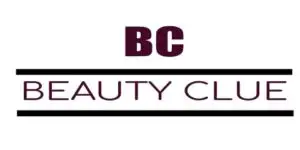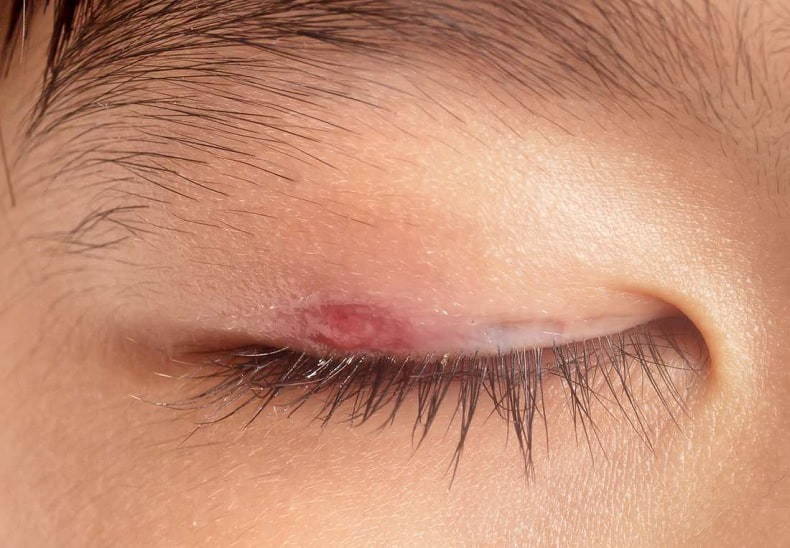When the eyelash grows inward instead of outward, this is commonly known as an ingrown eyelash. As the eyelash grows, it can irritate your eye and eyelid. The condition is common in adults and can occur on either the top or bottom eyelid.
An ingrown pimple on the eyelid can result from inflammation, trauma, or an issue with the eyelid. Over-the-counter remedies can treat symptoms such as pain and irritation. Ultimately you must remove the eyelash to avoid future problems.
* As an Amazon Associate I earn from qualifying purchases.
Symptoms of ingrown eyelash
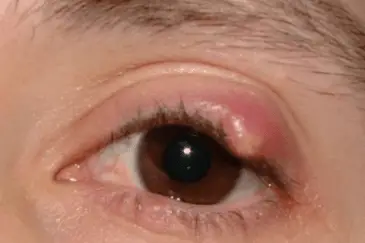
Trichiasis- as the condition is commonly known- is triggered by numerous problems in our eyelids. Notwithstanding the cause for the eyelash to become ingrown, the symptoms or signs of this disorder include:
Inflammation
Ingrown of the eyelash can trigger the eyelid becoming inflamed. This inflammation will disturb only the area of the actually inflamed eyelash. But, in cases where the eyelash forms an ingrown pimple that develops into a more severe infection, the total eyelid can often become inflamed.
Discomfort of pain
Discomfort and pain are common indications of this condition as well. How severe these indications are related directly to how the severity of an ingrown pimple on the eyelid.
When the eyelash begins to convert to ingrown, a sensation like sand in the eye is fairly common. Still, when the eyelash is completely ingrown and inflamed, this pain becomes very much more pronounced, normally direct to being unable to open the eye.
Disturbances of the vision
Due to an ingrown eyelash, scratching the eye and disruption of vision is fairly common. This disruption can be simply cloudiness to a full loss of vision in the eye that is affected. Any of these disorders are triggered by an injury to the cornea. In very severe cases, a corneal transplant is a lone way to cure the problem.
Dry eye
Also, the ingrown pimple on the eyelash can make the eye dry. When this happens, the affected individual may discover that the irritation and or pain get worse. Lubricating ointment or eye drops can go down with the irritation and the injury caused by the cornea being rubbed by the lash.
Other problems
If you’ve got this condition on your eyelid because of being triggered by another ailment of the eye, such as “ocular autoimmune disease” or trachoma, the affected individual can experience other indications. These can consist of extreme drainage of the eye and or scarring of the eyelid.
Additional signs and symptoms
Diverse conditions can lead to an ingrown eyelash. The signs and symptoms of trichiasis remain the same, although the cause may be different. Here are some of the most important symptoms of ingrown eyelashes.
- The most common symptom is constant irritation in the eyes. It is due to the frequent rubbing of the lashes in the eyes.
- The affected person has a feeling of some foreign particle in the eye. He always has a feeling of sand or grit in his eyes. It produces irritation and watering.
- There is a frequent infection in the eye.
- If the condition remains untreated for a long duration, it can produce abrasion and ulceration on the cornea. It increases the risk of loss of vision.
Ingrown Eyelash Hair Causes
This problem on your eyelid can be caused by autoimmune deficiencies, inflammation, and trauma to the eyes, or infection. A consequence of this disorder is that it can irritate the eyes or obstruct the view from the eyes. The truth of the matter is that anyone can suffer from it. The condition is more prevalent in adults than in young people.
Some individuals are genetically born with ingrown eyelash hair, while other individuals may experience it later in their lives. Individuals who are born with or inherit trichiasis may be suffering from a disorder known as Epiblepharon. [Source]The following are some of the most common causes of an ingrown pimple on eyelash hair:
1. Eye injury or trauma
In the case of any trauma or injury to the eyes due to the accident, this may lead to ingrown eyelash hair. Most of these injuries to the eyes may appear due to hitting or piercing the eye with sharp objects or burns. Injury to the eyelids may be caused due to eye surgery as well. This occurs especially if the injury is left untreated.
2. Psoriasis
if you happen to have psoriasis close to your eyes, it can make the eyelids become inflamed as it occurs when skin cells build up too rapidly. Thick skin cell patches can build up in the area of your eyelids, and they may inhibit new eyelash condition. This instance may result in the growth of an ingrown pimple on the eyelids, which may trigger even more discomfort. Psoriasis in the eye area also makes the skin on both lower and upper eyelids weak.
3. Distichiasis condition
This condition can be acquired since it may involve extra eyelashes growing from the Meibomian glands. The condition tends to trigger the development of a pimple on eyelash hair appearance on an individual with such a problem.
4. Entropion
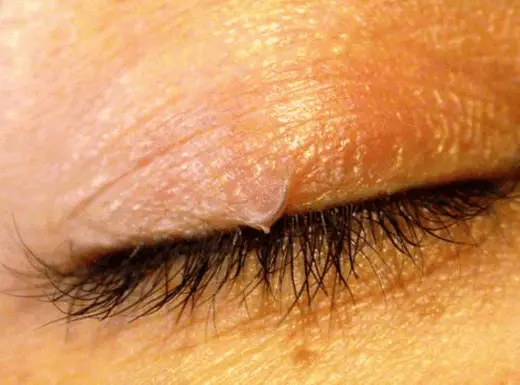
This is a situation that happens on the eyelids and is most common or appears in the elderly or older individual. In this condition, the margins of the eyelids flip inwards towards the eyes. The eyelids’ inward flipping may result in the ingrown eyelashes turning inwards and rub against the eyes.
5. Epiblepharon disorder
This is a congenital disorder that is also known to cause trichiasis. It is a situation in which the lashes of the eye are pushed inwards by muscles surrounding the eyes. The issue is commonly seen in Asian descent persons or African Americans. It can be easily corrected by surgery treatment.
6. Autoimmune Conditions or disorder
Some eye-related autoimmune disorders may cause eyelashes to grow inward, such as Stevens-Johnson syndrome (SJS) and vernal kerato-conjunctivitis (VKC).
Lupus is also one of the autoimmune diseases that can cause trichiasis. Inflammation of your eyes or eyelids is often characterized by lupus, according to reports from Everyday Health. Other symptoms emerging with autoimmune disorders include trichiasis, blurry vision, dry eyes, light sensitivity, and sore eyes.
7. Eye infections & Blepharitis
Blepharitis is characterized by inflammation of the eyelid rim or margin associated with the Meibomian gland disorder.
According to MSD Manual, most patients who have had long-standing chronic blepharitis may develop ingrown eyelashes.[Source] Inflammation of the eyelid is highly associated with bacterial infections in the eye. Major symptoms of blepharitis include the following:
- Burning sensation in the eye
- Swollen eyelid
- Irritated, red eyes
- Eyes that won’t stop tearing (eye-watering)
- Blurred vision
- Photophobia or sensitivity to light
8. Styes on the Eyelid
Apart from eyelashes growing abnormally, you may experience or have styes, which appear as bumps like pimples on the eyelid. These can sometimes appear due to the ingrown hair on eyelashes.
Moreover, eyelash lines and eyelid glands may become infected. This infection may be distributed to eyelash roots, altering their normal pattern of growth. Pores near the eyelid rims and eyelid may become infected. Cysts and swelling may obstruct the normal outward eyelash growth.
9. Acne
If you happen to have severe acne breakouts, it is possible it could lead to the appearance of an ingrown pimple on your eyelid from a bent eyelash.
10. Trichotillomania
This also results from the compulsive pulling of the eyelashes, which can, in turn, result in the ingrown hair of the eyelashes. It is advisable to consult your medical provider if you happen to have this condition.
11. Trachoma
This is one of the most common causes for the formation of ingrown hairs on eyelashes. Trachoma is considered to be the major reason for blindness. It spreads in countries with poor hygiene and can be treated with oral antibiotics.
12. Other Causes of Ingrown Eyelash Hair
In addition to the causes we mentioned above, there are some minor causes of inward eyelash growth. They include:
- Heavily hooded eyelids found in some nationalities increase the risk of trichiasis.
- Malformed eyelids.
- Congenital disorders.
- Eye infections from touching the eyes with dirty hands.
- Use of expired and contaminated cosmetics or eye makeups.
- People who are prone to severe acne can also get ingrown hair on the eyelid waterline.
- Pulling of eyelashes is also called trichotillomania.
Congenital disorders such as distichiasis (where eyelids grow in the oil glands) and epiblepharon (a redundant fold of skin under the eyelid) also cause eyelashes to rub against the eye too.
Eyelash Growing into Eyelid
The ingrown eyelash is a condition that is common, affecting both males and females of all Nationalities and also to a wide age group. As we discussed earlier in this post, its medical name for ingrowing eyelashes is “Trichiasis,” which is pronounced tri-ki-a-sis.
A pimple that results from an ingrown of the eyelash is often a painful and potentially damaging eye condition, where the eyelashes grow inwards towards the eye.
The constant rubbing of those eyelashes on the cornea can lead to infection and eventual scarring and vision problems. Ingrowing eyelashes can be of normal color and thickness or very fine and white or colorless and are extremely hard to see.
From many years of personal experience, I find that the normal thicker eyelashes can scratch the eye. Still, those fine, colorless lashes are extremely irritating and tend to tickle the eye constantly.
Eyelash Growing under Skin on Eyelid
When the eyelash grows under the eyelid skin instead of outward, it usually creates more eye problems. As it grows, it can irritate your eye and eyelid.
The most experienced issues during this condition are inflammation, trauma, or an issue with the eyelid. Over-the-counter remedies can treat symptoms such as pain and irritation. Ultimately you must remove the eyelash to avoid future problems.
Ingrown eyelashes and styes can both cause pain and redness. A sty is a pus-filled bubble. It normally appears on the outside of the eyelid. Blepharitis normally occurs when the edge of the eyelids become inflamed.
An extra row of eyelashes grows closer to the eye than normal, which rubs against the eye, irritating. The entire eyelid is turned inward, and the eyelashes rub against the eyeball. If trichiasis persists, it can cause scarring and damage to your cornea.
Ingrown Eyelash On the Outside of Eyelid
Any damage or abnormality in the eyelashes causes a lot of irritation and pain. Trichiasis will not only occur when the eyelash bents inside but also when it bends outside the eyelid. I can imagine how this is such a painful condition in which the eyelashes curl and grow backward into the skin surrounding the eye instead of growing out away from the eye.
Ingrown eyelashes may occur on both upper and lower eyelids and may at times obstruct your vision. People with hooded eyes are more prone to it. This condition is commonly observed in adults; however, toddlers, children, and elderly people may also suffer from ingrown eyelashes.
Ingrown Hair on Upper Eyelid
When an ingrown hair occurs on your eyelid, the affected eye may become red, irritated, and watery, and there is typically a sensation of having sand or grit in the eye. Sensitivity to light and pain may also develop. Chronic cases may lead to infection or cause permanent corneal scarring and vision loss, according to Merck.com.
The eyelash and eyelid play an important role in protecting the eyes from foreign particles. If there is an ingrown of the eyelash hair, it should be dealt with the soonest time possible before the problem gets worst.
Will an Ingrown Eyelash Fix itself?
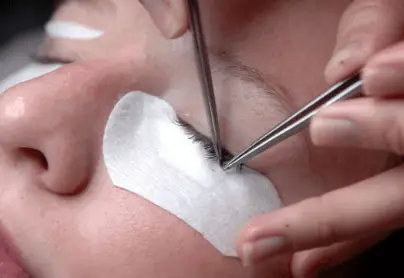
This condition happens when the eyelash is misaligned and grows toward the skin. It usually goes out on its own, but there are instances when the condition gets severe. The chronic infection could lead to permanent corneal scarring and even blindness.
Visit an ophthalmologist to have the ingrown eyelash removed. A doctor may be able to pull the affected eyelash free from the skin using forceps. Do not attempt to remove your eyelash at home.
Speak with an ophthalmologist about your eyelash’s surgical removal if you experience a recurrence following removal by forceps. An ophthalmologist may be able to correct the growth pattern of your lash surgically, or he may elect to cut out the affected lash or an entire section of lashes.
How to remove ingrown Eyelashes?
Epilation is a medical procedure that is commonly used to remove an ingrown of the eyelash. This procedure is done by the eye doctor, and he will first numb the eye with special drops. Using a magnifying glass to locate the eyelash that needs to be removed and the epilation forceps, the eye doctor will mainly pluck out the eyelash. This is a fast procedure, and symptom relief is practically immediate.
Electrolysis can often be considered for treating eyelashes as well. This uses an electrical current to kill the cells which are responsible for the formation of the eyelash.
This is actually the permanent removal of the eyelash, although some individuals will experience regrowth later. After the procedure, the individual has prescribed antibiotics to prevent infection.[Source]
There is also a procedure known as cryotherapy that can often be used to treat an eyelash’s ingrown. Liquid nitrogen is used to freeze and destroy the hair follicle.
Removing an ingrown eyelash
It is safe to remove the eyelash. In fact, eyelash removal is necessary to relieve the pressure and eliminate the problem. You can pluck the eyelash yourself or have another person do it for you. Another person may be able to see the lash better.
The eyelash will likely grow back and could be even more irritating when it does. To avoid future problems, you will likely have to seek help and a more lasting fix from an ophthalmologist.
In removing the eyelash, the doctor will grab the lash with forceps or pincers and pluck it out. You may need eye drops to help with the discomfort as your eye heals.
Doctors can also assist you in eyelid surgery or radiosurgery. In radiosurgery, a doctor passes a current into the root of the eyelash via radio waves. This will get rid of the eyelash and should help a recurring condition.
Other treatments include cryosurgery, where follicles or lashes are frozen and removed, and electrolysis, which uses electricity to remove hair. Some treatments might be more painful or have a longer recovery period than others.
Ingrown Eyelash Removal At Home
Removal of the vexing eyelash is the only definitive remedy for ingrown eyelashes. You may try these home remedies to reduce the pain, discomfort, and inflammation. However, it may not help get rid of it. It is advisable to visit a doctor and not self-treat yourself.
1. Warm compress
A warm compress may prove useful in an ingrowing eyelash, specifically to treat the inflammation by improving the blood circulation to the affected area. Though a warm compress may not treat the ingrown eyelash per se, it may help relieve the symptoms.
2. Teabag compress
Tea contains tannins, which are naturally antibacterial and anti-inflammatory medicines. Teabag compress may be used before or after removing ingrown hair to provide symptomatic relief of inflammation and pain.
It may also help in preventing infections caused due to ingrown eyelashes. You may soak a tea bag in warm water for 5 minutes and then keep it in the fridge for about 10 minutes before applying it to the affected eye.
3. Removal using a tweezer
The appropriate method of treatment for this condition is by carefully removing it. If you have a steady hand, you may remove the ingrown lash using a tweezer. Make sure that the tweezer you are using is clean and sterile to prevent any further infections. If you experience pain due to tweezers, it is advisable to visit an ophthalmologist to have the ingrown eyelash removed.
- Needle Nose Tweezers - Pointed tweezers are quicker and less painful. Enjoy optimum control with your Majestic Bombay medical-grade ingrown hair remover tweezers, crafted with long, pointed, and perfectly aligned tips.
- Precision Tweezers – Remove the thinnest splinters; glass shards; or brow, or bikini line hairs with a single pinch and pull. Your precision tweezers also hold false lashes and nails for application.
- Eyebrow Tweezers For Women – With their sharp tips and strong grip, your set is perfect for personal or professional use. Whether you’re an esthetician or homemaker, you’ve found your pointy tweezer set
- Splinter Remover Kit – Expect quality performance your needle sharp tweezers. Sure to impress whether used to smooth skin; given as a gift; or added to your art supplies, first aid kit, or survival gear.
- Made To Last – Rely on your splinter tweezers set year after year. Unlike the store-bought variety, your eyebrow plucker stays sharp and aligned thanks to our durable propriety stainless steel made by expert metal fabricators.
* As an Amazon Associate I earn from qualifying purchases.
Application of natural antibacterial agents

You may apply natural anti-inflammatory and antibacterial agents like coconut oil, aloe vera juice, turmeric paste, or honey to reduce the pain, discomfort, and inflammation.
Take the natural antibacterial agent on a clean cotton swab and apply it to the eyelash’s ingrown. Let it stay on the eyelash for 15- 20 minutes and then wash off carefully using warm water. You may also place chilled cucumber slices on your eyes to relieve the irritation and pain due to the eyelash’s ingrown hair.
- 100% PURE & NATURAL TEA TREE OIL - Handcraft Blends oils are exactly that! Many oils being sold make that claim but are in fact made of natural isolates and mixtures. Each essential oil is tested by an independent lab which is why every bottle comes with a Quality Guaranty.
- PREMIUM THERAPEUTIC GRADE & PREMIUM QUALITY – All Handcraft Blends Essential Oils are tested by an independent lab to test the efficacy of each oil. Each oil is tested for its constituents as well as to have no fillers, additives and to be undiluted.
- HIGH QUALITY GLASS BOTTLE AND DROPPER – Our essential oil comes in an amber glass bottle to keep out UV rays and protect the oil against sunlight. We also provide a glass dropper, so you get the exact amount of oil without any waste.
- TEA TREE OIL BLENDS WELL WITH - Bergamot, Cedarwood, Clove, Clary Sage, Lemon, Patchouli, Rosemary, and Sandalwood.
- BOTTLED IN THE USA – Our oils are sourced from the best regions all over the world to bring you the best and finest.
* As an Amazon Associate I earn from qualifying purchases.
- Hydrating and Moisturizing: Our turmeric soap bar is infused with turmeric and clove, combined with nourishing natural oils and butter sourced from botanicals. Specifically formulated for all skin types.
- Clear Smooth Skin Glow: Our turmeric soap is a game-changer for achieving clear and smooth skin. The benefits of turmeric help soothe the skin, leaving you with a radiant and natural glow after every wash.
- Great Formula and All-Natural Scent: Discover our holistic turmeric body soap that promotes clear and brighter skin. No synthetic fragrances - just an earthy, spicy iHeart Nature soap bar, enriched with a custom essential oil blend.
- Best Value Per Ounce - Long Lasting (6 OZ) Bar Soap: Elevate your bathing experience with our Turmeric body soap. With its generous 6-ounce size, this bar of soap lasts three times longer than your average soap and keeps your skin nourished and refreshed for an extended period.
- Made With Love In America - Cruelty-Free, Handmade, Small Artisanal Batches: We take great pride in creating premium natural artisanal skincare products. Every ingredient of our Turmeric body soap is intentionally chosen and vetted by a 3rd Party, guaranteeing sustainable sourcing and promoting longevity of biodiversity, healthy soils, and overall regenerative practices for our planet.
* As an Amazon Associate I earn from qualifying purchases.
Related Articles:
